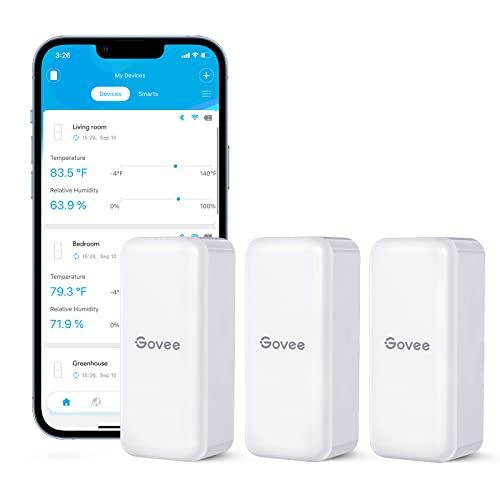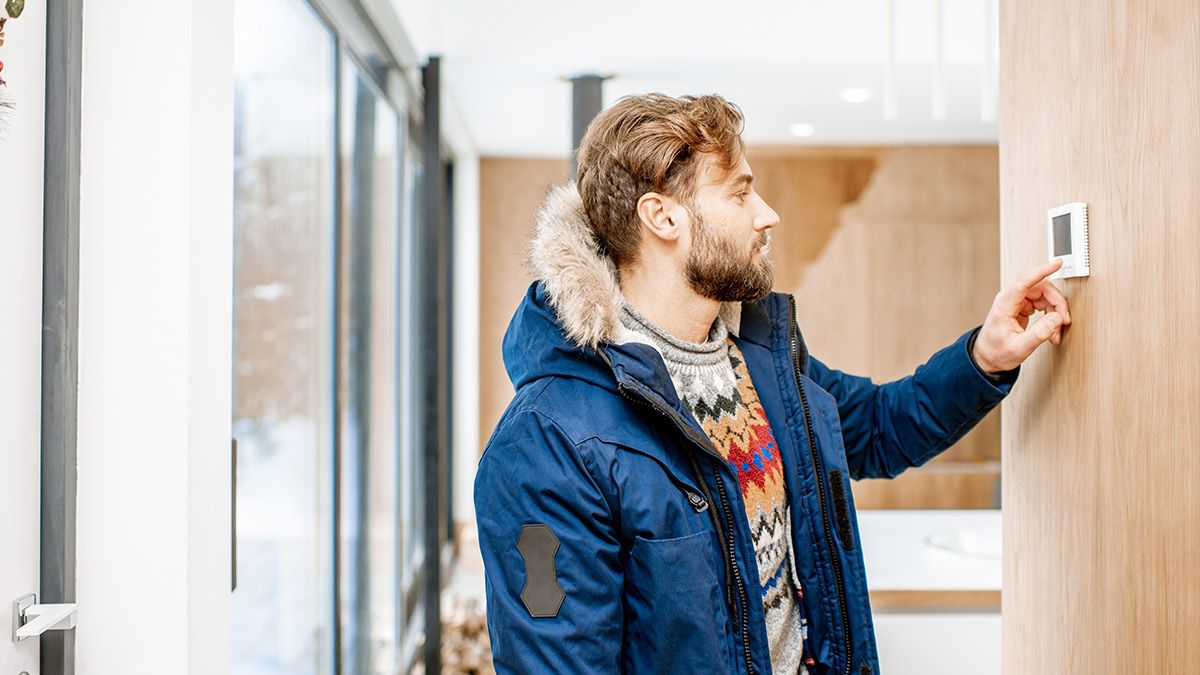Quick Links
Key Takeaways
You should set your thermostat to no less than 55°F to avoid cold weather damage to your home. Adjust upwards accordingly based on your climate and home insulation to ensure safe interior temperatures.
Whether you're headed on vacation and want to dial the thermostat back while you're away, or you're interested in saving on your energy bill all winter long, here's what you need to know.
The Difference Between Personal Comfort and Safety
For this discussion, we're not focused on optimal comfort. If you're headed out of town, you won't be there to be unhappy it's 10 degrees colder than normal. And if you're staying home, we're assuming you're braced for the coolness and have a cozy blanket ready.
Further, matters such as preferred temperature during the winter are subjective, and opinions vary wildly. While my immediate family loves keeping the house chilly in the winter, our relatives from semi-tropical climates think we're out of our minds for setting our thermostat so cold.
If you're curious about the commonly accepted optimum thermostat range for colder weather, though, sticking to around 68-72°F hits a sweet spot for general comfort for most people.
But general comfort isn't the same as how far back you can safely turn your thermostat without risking harm to yourself or the physical structure of your home.
As a general rule, the recommendation is to keep your thermostat set to at least 55°F. That's well above freezing, and it ensures that even if it gets a bit chilly in your home, enough warm air circulates around your home to keep it out of the danger zone.
If setting your thermostat to 55°F doesn't keep your home sufficiently and evenly warm enough because the outside temperature or poor insulation makes the thermostat reading inaccurate over the whole span of your home, adjust the thermostat upwards accordingly.
Monitor Your Home While Experimenting
If you're planning to dial your thermostat back, we'd strongly encourage you to do some simple things to ensure your experiment goes smoothly.
First, play around with the temperature at time when you're going to be home for an extended period of time during the cold weather. Your first trial run in turning back your thermostat much lower than usual shouldn't be right before a two-week winter vacation.
Second, actively monitor your home during the process, including lesser-used or rarely-accessed spaces. Because it's hard to gauge the actual temperature and humidity (and because you can't be everywhere at once) it's absolutely worth picking up a pack of inexpensive Bluetooth thermometer/hygrometer units. You can rotate them through locations in your home to see how cold/damp it gets in your basement, attic, crawlspace, and other spaces during your experiment.
In addition to pipes in crawl spaces and such, if you have any plumbing on exterior walls (such as a kitchen sink against an exterior wall ) be sure to pay attention to things like how cool it gets inside the closed cabinet where the pipes are.

Govee Hygrometer/Thermometer 3-Pack
These handy little wireless sensors are perfect for monitoring the conditions around your home while you experiment with your thermostat.
You may not feel uncomfortable when you dial the thermostat back, and the pipes might not be at risk of freezing, but there can be side effects you might not have anticipated.
For example, let's say that previously enough heat leeched through the poorly insulated floor of your home into the crawlspace below that it kept the moisture and mold at bay. But then, after dialing your thermostat way back, less heat leeches in, and the moisture level in the crawlspace rises, resulting in slow but eventual damage to the wood structure of your home.
Maybe you end up remediating that problem not by turning your thermostat back up but by vapor sealing the crawl space, installing a dehumidifier, or any other number of solutions. But you want to be aware of it and any other changes around your home that result from you changing your heating and cooling routine.
While every home is different, here is a quick summary of some common things you should pay attention to:
- General humidity level: The people in a home just living there as well as cooking, showering, and other day-to-day activities, raise the humidity. If your home is humid but cold, the moisture will condense on the cold walls and cause mold and mildew issues.
- General air quality: If you have forced air heating, turning the heat back leads to the furnace blower running less frequently. You may wish to set your thermostat to run the blower on a schedule to circulate the air.
- Cracks in drywall or plaster: A classic abandoned home trope in movies is crumbly walls and missing plaster patches. That's not so much a movie trope as a hard reality. Extreme temperature changes can lead to significant expansion and contraction of building materials. Keeping your home a human-friendly and stable temperature isn't just good for you but the structure itself.
- Drafts: Dialing your thermostat back won't cause drafts, you'll just notice them more. Sealing them up is a good practice in general but extra helpful if you're running your furnace less. You want to keep every bit of heat in.
We don't share these things to scare you into never turning back your thermostat but simply to make you aware of things you should consider when significantly adjusting the temperature of your home outside the range you had previously kept it in.
As long as you monitor your home's temperature and make adjustments to ensure that no part gets too chilly, you can safely lower your thermostat.

